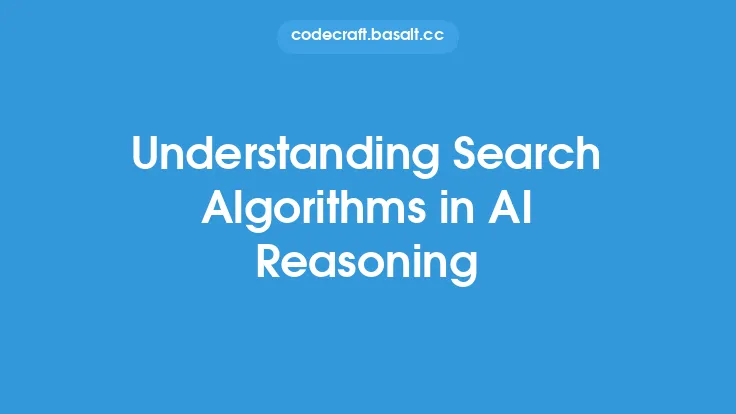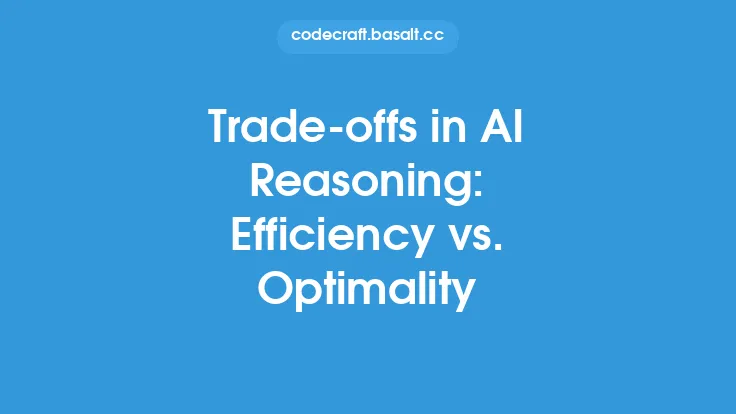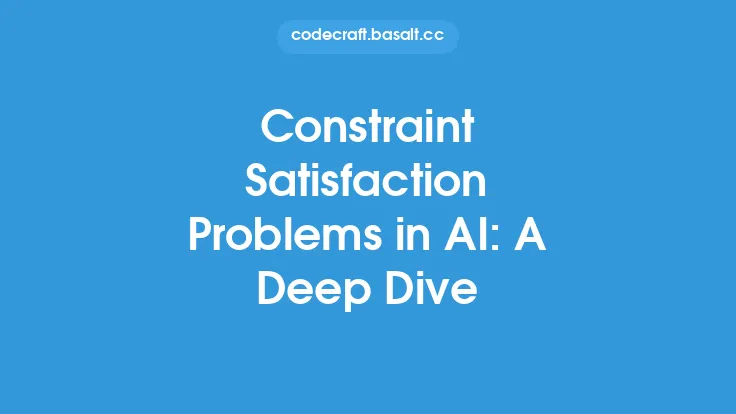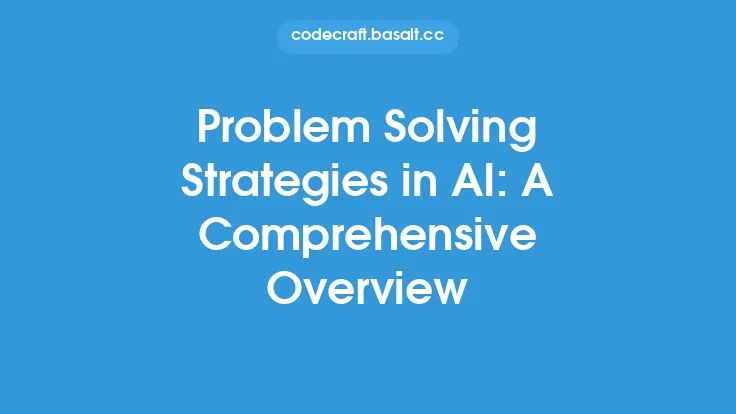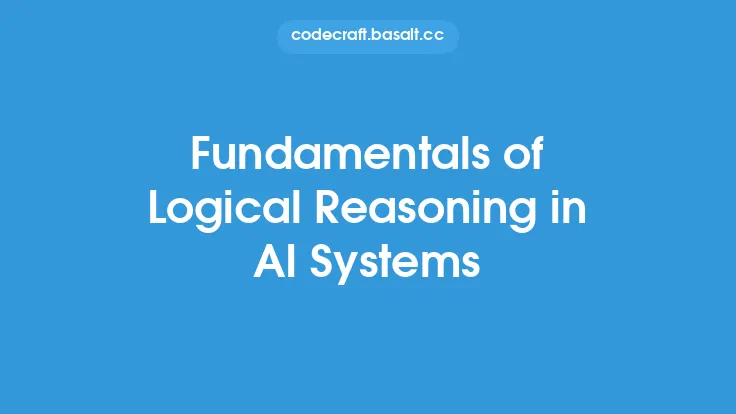Reasoning under uncertainty is a fundamental aspect of artificial intelligence (AI) that has been a subject of interest for decades. As AI systems become increasingly complex and are applied to real-world problems, the ability to reason under uncertainty becomes crucial. Uncertainty can arise from various sources, including incomplete or noisy data, ambiguous or vague information, and the inherent randomness of many real-world phenomena. In this article, we will delve into the concept of reasoning under uncertainty, its importance in AI, and the various techniques and approaches that have been developed to address this challenge.
Introduction to Uncertainty in AI
Uncertainty is an inherent property of many real-world systems, and AI systems must be able to reason and make decisions under uncertain conditions. There are several types of uncertainty that can arise in AI systems, including aleatoric uncertainty, which refers to the inherent randomness of a system, and epistemic uncertainty, which refers to the uncertainty that arises from a lack of knowledge or incomplete information. AI systems must be able to represent and reason about these different types of uncertainty in order to make effective decisions.
Probability Theory and Uncertainty
Probability theory provides a mathematical framework for representing and reasoning about uncertainty. Probability theory is based on the idea that uncertain events can be assigned a probability, which represents the likelihood of the event occurring. There are several different interpretations of probability, including the frequentist interpretation, which views probability as a long-run frequency, and the Bayesian interpretation, which views probability as a degree of belief. Bayesian probability theory is particularly useful for reasoning under uncertainty, as it provides a framework for updating probabilities based on new information.
Bayesian Networks and Uncertainty
Bayesian networks are a type of probabilistic graphical model that can be used to represent and reason about uncertainty. A Bayesian network consists of a directed acyclic graph (DAG) in which each node represents a random variable, and the edges between nodes represent conditional dependencies between the variables. Bayesian networks can be used to represent complex probability distributions and to perform probabilistic inference, which involves computing the probability of a particular event or set of events. Bayesian networks have been widely used in AI applications, including expert systems, decision support systems, and machine learning.
Fuzzy Logic and Uncertainty
Fuzzy logic is a mathematical approach to representing and reasoning about uncertainty that is based on the idea of fuzzy sets. A fuzzy set is a set whose membership is not binary, but rather a matter of degree. Fuzzy logic provides a framework for representing and reasoning about vague or ambiguous information, and has been widely used in AI applications, including control systems, decision support systems, and expert systems. Fuzzy logic can be used to represent uncertainty in a more nuanced way than traditional probability theory, and can be particularly useful in applications where the uncertainty is epistemic rather than aleatoric.
Dempster-Shafer Theory and Uncertainty
Dempster-Shafer theory is a mathematical approach to representing and reasoning about uncertainty that is based on the idea of belief functions. A belief function is a function that assigns a degree of belief to a set of propositions, rather than a single proposition. Dempster-Shafer theory provides a framework for representing and reasoning about uncertainty in a more flexible way than traditional probability theory, and can be particularly useful in applications where the uncertainty is epistemic rather than aleatoric. Dempster-Shafer theory has been widely used in AI applications, including expert systems, decision support systems, and machine learning.
Applications of Reasoning Under Uncertainty
Reasoning under uncertainty has a wide range of applications in AI, including expert systems, decision support systems, machine learning, and robotics. In expert systems, reasoning under uncertainty is used to represent and reason about the uncertainty of the expert's knowledge, and to make decisions based on that knowledge. In decision support systems, reasoning under uncertainty is used to represent and reason about the uncertainty of the decision-making process, and to provide recommendations to the user. In machine learning, reasoning under uncertainty is used to represent and reason about the uncertainty of the learned model, and to make predictions based on that model. In robotics, reasoning under uncertainty is used to represent and reason about the uncertainty of the robot's environment, and to make decisions about how to navigate and interact with that environment.
Challenges and Future Directions
Reasoning under uncertainty is a challenging task, and there are several future directions for research in this area. One of the main challenges is the need for more efficient and scalable algorithms for reasoning under uncertainty, particularly in applications where the uncertainty is high-dimensional or complex. Another challenge is the need for more effective methods for representing and reasoning about uncertainty in a way that is intuitive and understandable to humans. Future directions for research include the development of new probabilistic models and algorithms, the application of reasoning under uncertainty to new domains and applications, and the integration of reasoning under uncertainty with other areas of AI, such as machine learning and natural language processing.
Conclusion
Reasoning under uncertainty is a fundamental aspect of artificial intelligence that has a wide range of applications in expert systems, decision support systems, machine learning, and robotics. There are several different approaches to reasoning under uncertainty, including probability theory, Bayesian networks, fuzzy logic, and Dempster-Shafer theory. Each of these approaches has its own strengths and weaknesses, and the choice of approach will depend on the specific application and the type of uncertainty that is present. As AI systems become increasingly complex and are applied to real-world problems, the ability to reason under uncertainty will become increasingly important.
